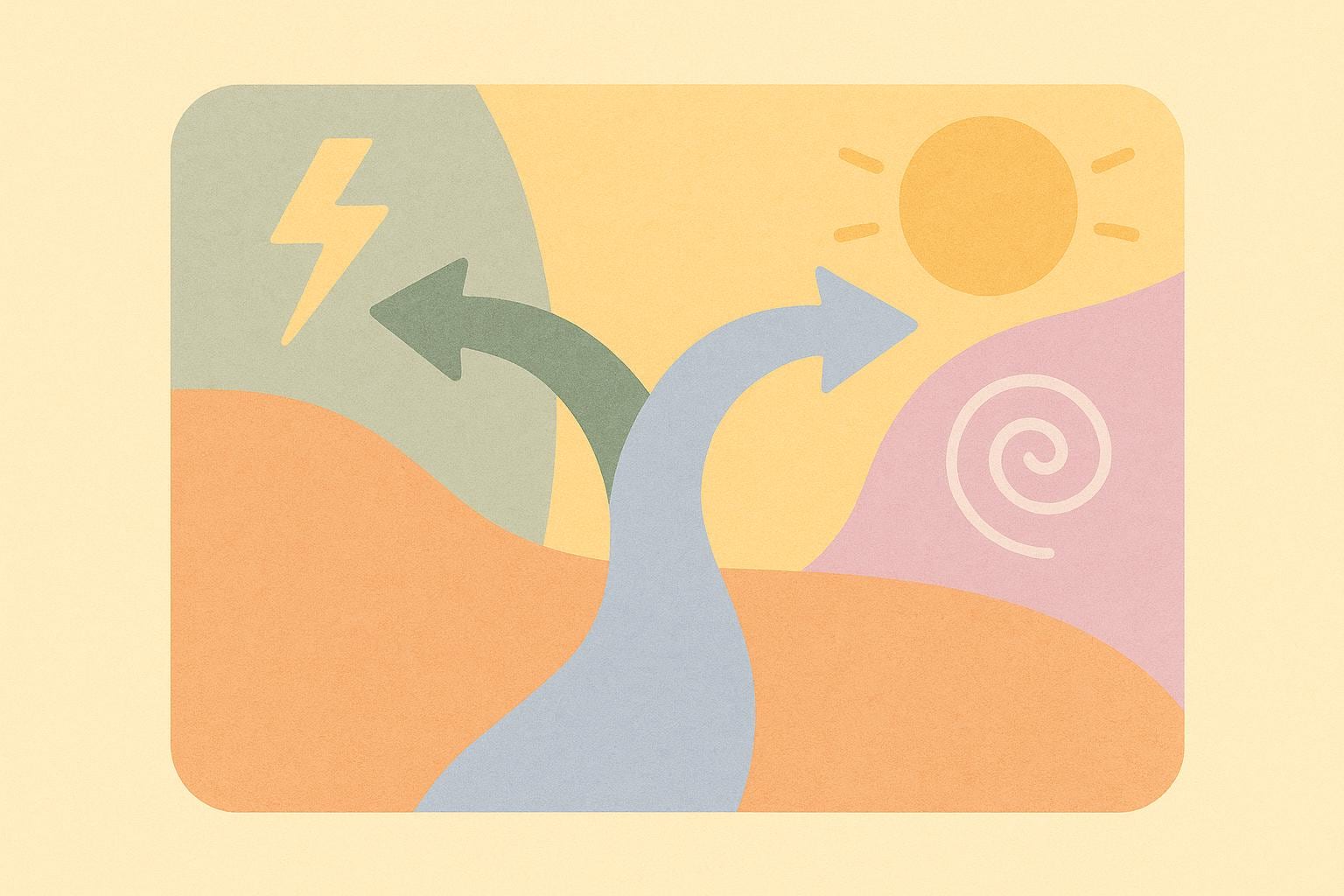You spill your morning coffee and burst into tears. A colleague makes a minor critical comment and you feel a surge of intense anger that lasts for hours. You feel a wave of sadness so heavy that the thought of getting off the sofa feels impossible.If it often feels like your emotions are in the driver’s seat, hijacking your day and leaving you feeling powerless, you are not alone. The desire to “control” your emotions is universal. But the secret isn’t to suppress your feelings—it’s to learn how to respond to them skillfully.In this blog, you’ll learn one of the most powerful and counter-intuitive skills from Dialectical Behavior Therapy (DBT): Opposite Action. It’s a game-changer for reclaiming your emotional balance.
What is Opposite Action (And Why Does It Work?)
Every emotion comes with a set of "action urges"—the things your body instinctively wants to do. When you feel fear, you want to run. When you feel shame, you want to hide. When you feel anger, you might want to attack.
Opposite Action means choosing to do the exact opposite of what your unhelpful emotion is telling you to do.There's a crucial rule: you only use this skill when your emotional reaction doesn't fit the facts of the situation, or when acting on the urge will make things worse in the long run. If your house is on fire, the urge to run away is justified! But if you feel overwhelming shame because of a tiny mistake, the emotion is out of proportion to the facts.By acting opposite to the unhelpful urge, you send a powerful message back to your brain that challenges the emotion itself, causing its intensity to decrease.
Putting Opposite Action into Practice: A Step-by-Step Example
Let’s use a common scenario: You make a small typo in an email to your boss.The Emotion: A wave of intense shame and fear washes over you. You feel worthless and incompetent. The Action Urge: You want to hide, avoid your boss all day, stay silent in meetings, and make yourself as small as possible.Here’s how to apply Opposite Action:
- Check the Facts: Is my emotional reaction (intense shame, feeling worthless) justified by the reality of the situation (a minor, common typo)? No.
- Identify the Opposite Action: The opposite of hiding and avoiding is engaging and being confident. This means: not apologizing profusely, participating in the next meeting, and maybe even privately acknowledging the typo to your boss in a calm, matter-of-fact way if necessary.
- Do the Opposite Action (All the Way): Take a deep breath and walk to the coffee machine. Make eye contact with colleagues. Speak up in the meeting about a topic you know well. You act as if you are competent and confident (because you are!).
- Notice the Result: As you act opposite to the shame, the shame itself begins to shrink. You’ve just proven to your brain that the catastrophe it predicted didn't happen.
This single skill is incredibly empowering. But what happens when your emotion does fit the facts? Or when you’re in so much pain that you can’t even think straight?Opposite Action is just one tool in a complete emotional regulation toolbox. To truly master your emotions, you also need skills for distress tolerance, mindfulness, and checking the facts.
That’s why I created the DBT Emotion Regulation Workbook.This workbook doesn’t just teach you one skill; it gives you the entire toolkit. It contains cheat sheets, diary cards, and step-by-step worksheets for every core DBT skill, from Opposite Action and Distress Tolerance to Mindfulness and Checking the Facts. It makes these life-changing skills easy to practice and apply right when you need them most.
Ready to Stop Being Ruled by Your Emotions?
Imagine feeling an intense emotion, and instead of being swept away, having a clear roadmap of what to do. Imagine building true emotional resilience and improving your relationships because you can respond thoughtfully instead of reactively.This is possible. The DBT Emotion Regulation Workbook is your comprehensive guide to becoming the master of your own emotional world.
Get the Workbook HERE & Master Your Emotions Today
Frequently Asked Questions
Q: Does this mean I should ignore or suppress my feelings?
A: Not at all. This is the opposite of suppression. It's about acknowledging your feeling, checking if it fits the facts, and then choosing the most effective and healthy way to respond, rather than letting the initial urge take control.
Q: This sounds hard to do in the heat of the moment.
A: It can be, which is why practice is key. The workbook provides worksheets and tracking logs that help you practice these skills when you're calm, making it much easier to access them when you're distressed.
Q: What exactly is DBT?
A: DBT stands for Dialectical Behavior Therapy. It's a highly effective, evidence-based type of therapy originally developed to help people with intense emotional suffering. Its skills are now widely used to help anyone build better emotional regulation.
Q: Is this a replacement for therapy?
A: No. This workbook is a powerful self-guided tool for education and support, and can be an excellent complement to therapy. It is not, however, a substitute for professional medical advice or treatment from a qualified therapist.

